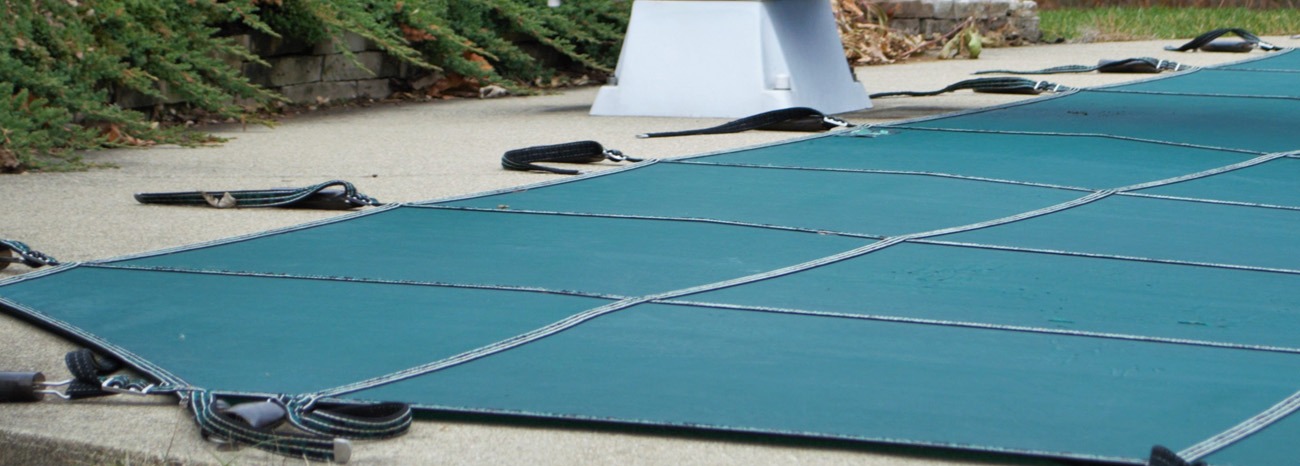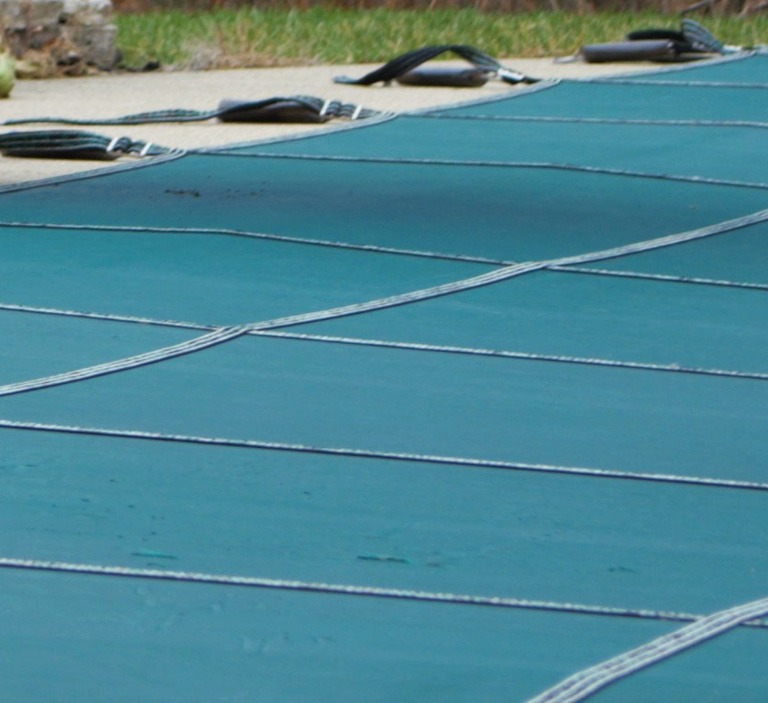Every pool owner should have a pool safety cover. It keeps out debris, maintains an even temperature, reduces water evaporation, and enhances overall safety. Every type of pool cover has its own specific installation procedure. This guide will walk you through the installation process for each.
The Importance of a Pool Cover
Pool covers act as a barrier against debris, reduce maintenance efforts, and help you save money. Because a pool cover maintains the water temperature, pool owners save money on heating costs. Pool covers also conserve water by reducing evaporation. Most importantly, they add a layer of safety by preventing accidental falls into the pool.
There are many types of pool covers, including safety covers, winter covers, solar covers, automatic pool covers, and mesh covers. Each type serves a unique purpose.
Tools and Materials Needed for Installation
The basic tools needed for pool cover installation typically include a measuring tape, a drill, and a wrench. Depending on the type of pool cover, you may need additional items like anchors, springs, or straps. Always refer to the manufacturer’s instructions for a comprehensive list.
Installing Different Types of Pool Covers
Installing Winter Pool Covers
- Prepare the pool: Clean the pool and adjust the water chemistry for winter.
- Measure the pool: Determine the dimensions of the pool.
- Place and secure the cover: Lay the winter cover over the pool, securing it with water bags or weights.
- Winter maintenance: Occasionally check the cover, removing snow or water as necessary.
Installing Solar Pool Covers
- Measure the pool: Determine the pool’s dimensions.
- Cut the cover: Trim the solar cover to fit the pool’s shape.
- Place and remove the cover: Place the cover by floating it on the pool’s surface, bubble-side down. When opening the pool, roll up the cover to remove it from the surface.
Installing Automatic Pool Covers
- Measure the pool: Determine the pool’s dimensions.
- Install the tracks and rollers: Follow the manufacturer’s instructions to set up the track system along the sides of the pool.
- Attach and adjust the cover: Connect the cover to the roller and ensure it retracts and extends smoothly.
Installing Mesh Pool Covers
- Measure the pool: Determine the dimensions of the pool.
- Secure the anchors: Drill holes in the pool deck and insert the anchors.
- Attach and tighten the cover: Secure the cover to the anchors using the springs or straps, ensuring it is taut and secure.
Common Installation Mistakes and How to Avoid Them
- Improper Measurement: One of the most common mistakes is improper measurement of the pool’s size and shape. A poorly fitted cover can lead to ineffective coverage and increased wear and tear. To avoid this scenario, measure your pool carefully, including any irregularities or protrusions. Use a flexible measuring tape to accurately capture the dimensions.
- Incorrect Anchor Placement: Another common mistake is incorrect placement of anchors, especially for safety and mesh pool covers. Misplaced anchors can lead to a loose or skewed cover, reducing its effectiveness and compromising its safety. Always follow the manufacturer’s instructions for anchor placement, marking out the positions accurately before drilling.
- Over-tightening of the Cover: Over-tightening the pool cover can put unnecessary stress on both the cover and the anchoring points, leading to damage over time. While it’s important that the cover is taut to prevent sagging and accumulation of debris, there should still be some give to allow for natural expansion and contraction with temperature changes. Always refer to the manufacturer’s guidelines for how taut to make the cover.
- Neglecting to Prepare the Pool: Before installing a pool cover, especially a winter cover, it’s essential to properly prepare the pool. This includes cleaning the pool, balancing the water chemistry, and lowering the water level if necessary. Neglecting these steps can lead to problems like algae growth or water imbalance, which can be difficult to deal with once the pool is covered.
- Ignoring the Manufacturer’s Instructions: Every pool cover is different and what works for one may not work for another. Ignoring the manufacturer’s instructions and opting for a one-size-fits-all approach can lead to ineffective coverage and potential damage. Always follow the manufacturer’s instructions for the best results.
The Benefits of Hiring a Professional for Installation
Installing a pool cover can be a complex process, especially when working with automatic pool covers. Hiring a professional installer can save time and effort, ensure safety, and provide the assurance of proper installation. Not to mention the potential of cost savings in the long run through proper installation and maintenance advice, warranties and ongoing support.
Maintenance and Care for Your Pool Cover
Taking care of your pool cover with regular maintenance helps it last for a longer time. So, take a moment every month or so to check for wear and tear, especially around the edges and at the attachment points. Keep the cover clean and clear of debris, and avoid letting water or snow accumulate on top. If you have an automatic cover, make sure the tracks are clean and the mechanism is well lubricated. If you notice any damage, address it promptly to prevent it from worsening.
If you need help, our Pool and Spa professionals are happy to be of service. Call us at 215.799.2008.


